#ancient near eastern
Explore tagged Tumblr posts
Text

~ Man and woman in loving embrace.
Place of origin: Iraq, Nippur
Period: Achaemenid Period
Date: 450 B.C.
Culture: Near Eastern
Medium: Terracotta
#ancient#ancient art#history#museum#archeology#ancient sculpture#ancient history#archaeology#man and woman in a loving embrace#man#woman#love#hug#embrace#nippur#iraq#near east#near eastern#achaemenid#450 b.c.
1K notes
·
View notes
Text
#MetalMonday:

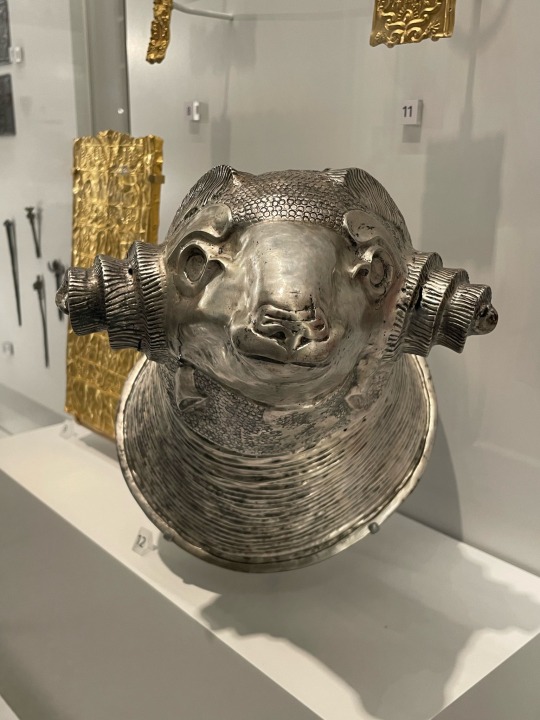
Silver Ram’s Head Rhyton, c. 700-600 BCE, from Ziwiye (Iran)
On display at Penn Museum
Read more about this piece here:
#animals in art#museum visit#ancient art#Iranian art#Middle Eastern art#Near Eastern art#rhyton#drinking vessel#metalwork#silver#ram#Penn Museum#Metal Monday
217 notes
·
View notes
Note
Could you go more into what you meant when you said God hates sacrifices?
those aren't my words, they're god's (is 1:11; amos 5:23; hosea 6:6; etc etc)
#this is something he will not shut up about come exile#ask#there is no poetry on this blog i am just quoting this ancient near eastern god
114 notes
·
View notes
Text
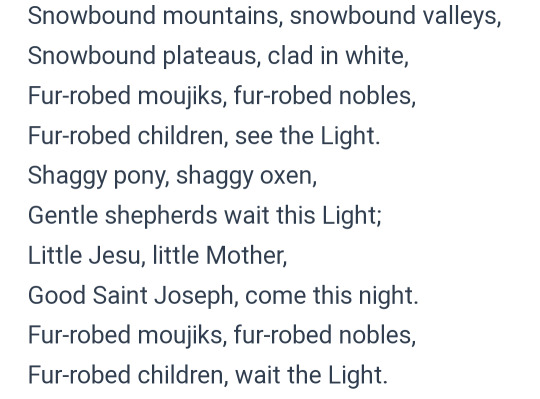
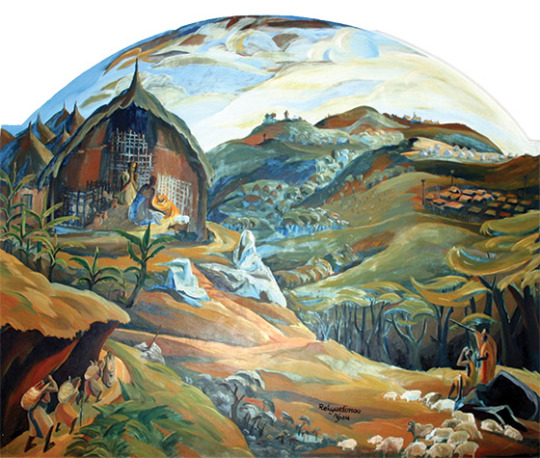
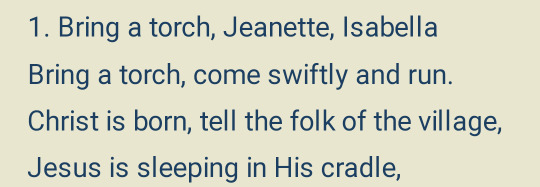


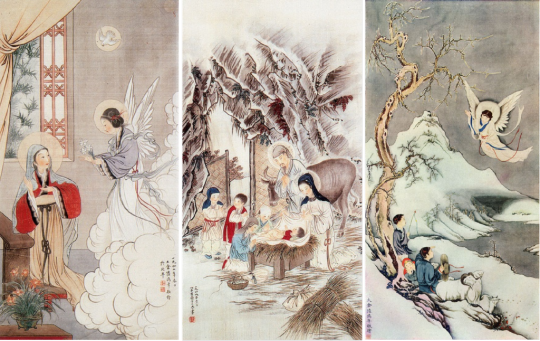
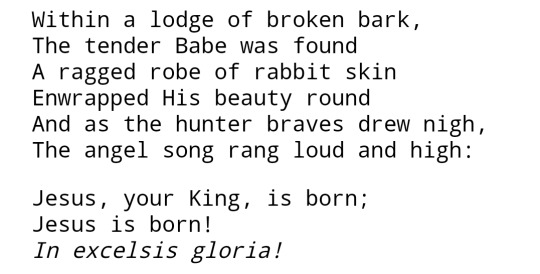
We see him come and know him ours
Russia: "Carol of the Russian Children," traditional // Kenya: The Nativity, Elima Njau // France: "Bring a Torch, Jeanette Isabella," Nicolas Saboly // Haiti: Madonna and Child, Ismael Saincilus // Australia: "The Three Drovers," William James // China: Tryptic by Lu Hongnian // Canadian/Algonquian: "Huron Carol," Jean de Brébeuf
#the visual depictions are lovely#but what really gets me every time are the little cultural details in the music#music that tells the story of the Nativity while placing it in a world that's familiar to the listener#fur robed moujiks on snowboard plateaus in place of middle eastern shepherds#bark lodges instead of stables and rabbit skin in place of swaddling clothes#wandering hunter and chiefs from far off places instead of shepherds and wise men (man i love the Huron Carol)#and little french girls running to gather the village to come see Jesus#it's easy for an excess of historical concern to make Jesus feel distant and far off#/I know/ that Jesus was born in the ancient near east and have had my fill of books and sermons and the like unpacking the implications#I've laughed with my friends and family at the wild inaccuracies of Nativity sets and tellings#the crazy blonde mary in the kids nativity set at Walmart#what is that alpaca doing at the living Nativity don't they know those are south American?#yada yada#and then i look at these carols and think. it's okay not to get mired in the history. good even#yes Jesus entered into time and space in a very specific manner#but he also came for all of us#as another carol says: we see him come and know him ours#i just think this practice is lovely#that the impact of the Incarnation was such that it send little french girls running to their villages#and drew algonquin hunters and russian peasants to the manger to see him#it's the great crowd of witnesses in a way#all of us together preparing him room throughout all the corners of the earth#in Bethlehem that night it was only the shepherds who got to see him#but in spirit it was all of us#because it's just like the angel said:#good news of great joy which will be to all people#to all people#starting with the shepherds and going out to all the earth#unto us a child is born#intertextuality
78 notes
·
View notes
Text
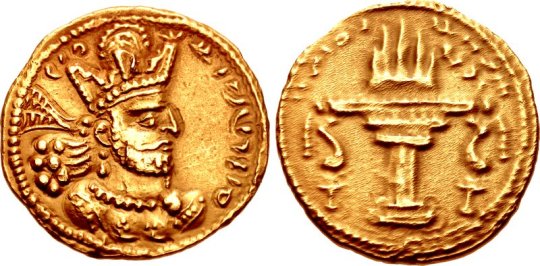
Gold coin of Shapur (Šābuhr) II "the Great," king of Sassanid Persia from 309 to 379 CE. On the obverse, the bust of Shapur, wearing a mural crown topped with the jewel-studded globe known as a korymbos; on the reverse, a fire altar, reflecting Shapur's aggressive promotion of Zoroastrianism within his realm. Artist unknown; minted ca. 320 CE and found in the present-day nation of Georgia. Photo credit: Classical Numismatic Group, Inc. http://www.cngcoins.com
#history#ancient history#Near East#Ancient Near East#Persia#Ancient Persia#Persian Empire#Sassanids#Sassanid Persia#Shapur II#art#art history#ancient art#Near Eastern art#Ancient Near Eastern art#Persian art#coins#ancient coins#numismatics#ancient numismatics#gold#goldwork#Zoroastrianism
166 notes
·
View notes
Text
cant believe i have to do shit tomorrow life's so unfair
#i have akkadian study group then a meeting at the ancient near eastern history institute then come back home and shower before the theatre#and then come back home and on Saturday go to my grandma's and make scones and then go to my bf's and then theatre agai#and then the weekends gonna be nearly over im already exhausted
6 notes
·
View notes
Text
Not me thinking I was going to have like 4 people sign up for my intense reading grad seminar and instead it's like 15.....
#the children yearn for ancient near eastern empires#professuffering#how tf am i going to do class presentations now if there's this many people? we only have 15 classes total!!
5 notes
·
View notes
Note
Looking at your interesting — and always high quality — posts on the “Copenhagen school”. It seems we share similar concerns about later datings of the final redaction of the Torah and other Hebrew texts, to the 3rd and even second century BC by Gmirkin and others. How much do you think this reduces ancient Near Eastern literature to just variations on the classical Greek literature templates?
Thank you for your ask and for your kind words on the quality of my posts.
Concerning the substance of your ask, I am not a Biblical scholar, so I cannot speak with some authority on such topics. I posted about the "Copenhagen school" because I found its positions very interesting and thought provoking. But I think that most (non fundamentalist or "Biblical maximalist"...) Biblical scholars today place the composition of the bulk of the final version of the Hebrew Bible (the Old Testament for Christians) in the 5th century BCE, prior to any serious contact of the Jews with the Greeks, with the exception of the Book of Daniel, of some other pseudepigrapha and perhaps of the Book of Judith, of the Book of Esther and of Qohelet, which are placed in the Hellenistic period.
Now, even if the "Copenhagen school" and Gmirkin are right about the datings of composition of the final version of the Bible, so that we could accept the possibility of a Greek influence on it (other than the influence of Greek philosophy and culture on choices of translation from Hebrew to Greek and on the interpretation of the Bible, about which there is not much doubt), I think that it would be totally wrong to say that the Hebrew Bible, let alone ancient Near Eastern literature in its entirety, could be reduced to just variations on the classical Greek literature templates. In fact ancient Near East had a very important literary tradition which predates for many centuries even archaic ancient Greek literature, although of course the truth remains that the Greeks developed (mostly independently) and perfectioned pre-existing literary genres like epic and didactic and lyric poetry and revolutionized literature by creating new genres, like drama, historiography, rhetoric and philosophical dialogue and treatise. Personally I tend to see the Hebrew Bible as part of a broader Near Eastern religious and literary tradition, although there is for sure also much originality and new beginnings of crucial importance in content and form in the Bible.
On the other hand, even if the "Copenhagen school" is wrong in its main position, I think that their approach has the important merit that it drew attention to the analogies and similarities existing between ancient Greek literature and especially Herodotus' Histories and the Hebrew Bible, a field of research that I find very interesting.
But again this should not make us forget the essential differences that exist between these works. To focus only on the relationship between the Bible and Herodotus, which preoccupies the most scholars of the "Copenhagen school" and others who could be affiliated with it, even those of the books of the Bible which do not just expose various "myths of origins and of founders", but relate the history of a non mythological past and contain often (although for sure not always) accurate information, especially on the history of the two Hebrew kingdoms, are in fact above all hierohistory. I say this because these books are seen by their community as divinely inspired and the historical events are interpreted (and in not few cases even distorted or invented) in them exclusively on the basis of the relationship of the God of Israel with his people and of the respect or transgression by the latter and its leaders of the "pact' dictated by the former.
On the contrary, Herodotus presents himself as an investigator of the past who takes individual responsibility for what he says and adopts some explicitely stated methodological principles in his research. Moreover, although he believes in the (mostly indirect) intervention of the divine in the course of events and adopts a "tragic" conception of history, according to which the powerful and arrogant are eventually punished for their hybris, he pays mostly attention to and investigates the natural and above all the human causes of events (geography and environment, chains of interactions between actors, the conflict between the desire for domination over others and the aspiration to freedom, the necessary limits of imperial expansion, the tension between the common human nature and the vast diversity of cultures among human groups, institutions and their influence on collective and individual characters, military techniques and equipment, good or bad decisions of the historical actors in given circumstances) and tries to discern some patterns which underlie history.
6 notes
·
View notes
Text
Author: Kevin Mills
Description from Bloomsbury:
An introduction to ancient myths and the critical discussions that surround them, this book dives into the stories of pre-modern culture, taking a comparative look at how they have shaped the West and modern storytelling as we have come to understand it today.
It makes texts and scholarship from near Eastern, Classical and Celtic disciplines engaging and accessible, and traces narrative meaning through stories from ancient Mesopotamia to the BritishMedieval Period, offering compelling pathways into such writings as The Epic of Gilgamesh, Genesis and Job, The Odyssey, The Mabinogi, TheLife of St Cadoc and Sir Orfeo. Looking at each in detail, Myths and Ancient Stories also explores myth through a modern lens, probing at how, in this scientific age, it continues to inspire contemporary film, games and literary works such as those by, Margaret Atwood, Colm Tóibín, Madeleine Miller and Pat Barker.
Impressive in breadth and bringing together a wide range of foundational texts from diverse traditions for the first time, this work is the ideal orientation to the ancient works central to English literary culture, shedding light on the mythological roots of storytelling and narrative.
#to read list#book#ancient myth#mythology#Kevin Mills#Bloomsbury#Myths and Ancient Stories#Narrative#Meaning and Influence in the West#pre-modern culture#storytelling#literary studies#near eastern studies#classical studies#celtic studies#narrative#literary culture#The Epic of Gilgamesh#Book of Genesis#Book of Job#The Odyssey#The Life of St Cadoc#The Life of St Orfeo#The Mabinogi#arts and humanities#arts and culture#stories#history
5 notes
·
View notes
Text
the feminist retelling industrial complex is taking years off my life atp


im going to start nailing ursula k. le guin's essay "what women know" to these people's doors honestly
#naively assumed in this day and age no one would let a gentile author publish this#but people in the reviews are saying it reads as veryyyyy ex christian to a childish extent#and when i got to that 'a radical roman preacher in judea' i killed myself#also draws (badly) on a ton of ancient near-eastern mythology which it really has no business trying to synthesise into a christian#perspective lol super weird
6 notes
·
View notes
Text

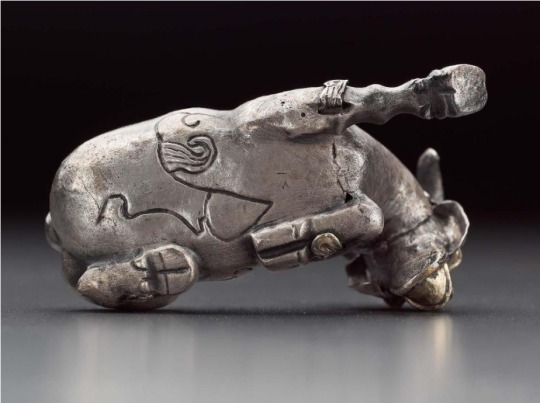
~ Mountain goat.
Place of origin: Near Eastern, Iranian
Period: Elamite, Proto-Elamite
Date: 3500–2700 B.C.
Medium: Silver and sheet gold.
#ancient#history#ancient art#museum#archeology#ancient sculpture#ancient history#archaeology#iran#iranian#near east#near eastern#elamite#3500 b.c.#2700 b.c#silver#goat#mountain goat
2K notes
·
View notes
Text
Arachnid appreciation post:


Marble cylinder seals from ancient Mesopotamia, Late Uruk / Jamdat Nasr Period, c. 3500-2900 BCE: (7) Three #Spiders (8) #Scorpion with a Plant on display at The Morgan Library & Museum
#animals in art#museum visit#Mesopotamian art#ancient art#seal#cylinder seal#marble#Near Eastern art#Middle Eastern art#spider#spiders#scorpion#scorpions#arachnid#arachnids#arthropod#arthropods#Morgan Library and Museum
31 notes
·
View notes
Note
in 2 chronicles 7:14 it talks about how god will hear the people if they humble themselves then god will hear them and act. so does god not hear us if we are not humble? i’m a bit confused on what this verse is trying to say
here, god promises to hear (אֶשְׁמַ֣ע) the needs of his people. the alternative to this isn't that god will not hear. it's worse: it's that god will hear and will not act. ancient israel quickly gained a conditional covenant with their god. this is that conditionality. you are either good to me, and i hear you, says this god. or you are not good to me, and then you will wish that i had not heard you
17 notes
·
View notes
Photo

The pyramidion of the tomb of the “Priest of the Apis” Ptah-mose. The dead couple are praying to the sun gods Khepri, Re-Harakhte, and Atum.
Limestone.
New Kingdom, 1340-1290 BCE
National Museum of Denmark, Department of Classical and Near Eastern Antiquities
#denmark#history#historyblr#history museums#national museum of denmark#classical and near eastern antiquities#egyptian history#egyptian history exhibit#ancient egypt#ancient egyptian artifacts#ancient egypt exhibit#museums#museum
4 notes
·
View notes
Text
I would be a Paleontologist (thank you David Attenborough)
@jeena-says-hi @all54321 @erdariel @technicallydangerousphantom @george-the-pumpkin
if we lived in a world where u had to do the career u were first interested in as a child what would u be doing, id be a firefighter
#if we want to be reeeaaaaally technical when I was 6 I wanted to be a historian (which I am studying to be rn)#but when I was 8 I watched David Attenborough's “Rise of the Animals”#and became obsessed with the idea of being a paleontologist until I was about 14 or 15#then I went back to being a historian#if one thing was consistent I've always always ALWAYS wanted to study the past and fill in the gaps#my degree is literally medieval history#and atm I'm adoring ancient Near Eastern history#Babylon is SO INTERESTING#I could talk about it forever#wow that's a long rant haha#tag game#mutuals
120K notes
·
View notes
Text
Creation and Controversy: Responding to Paul Gee on Genesis 1:1-5 and Abraham 4:1-5
Paul Gee’s critique of Genesis 1:1-5 compared to Abraham 4:1-5 has sparked strong reactions, especially regarding the concept of “God” versus “the Gods.” Mormons who believe the Book of Abraham are denying what is written in Genesis. They are accepting a belief in a plurality of Gods instead of a one true God which the Bible teaches. As for Joseph Smith, who wrote this false Book of Abraham,…
#Abraham 4 and ancient cosmology parallels#Abraham 4:1-5 SEO keywords#Abraham 4:1-5 vs Genesis 1:1-5 comparison#Ancient cosmology in the Book of Abraham#Ancient Egyptian creation myths and LDS doctrine#Ancient Near Eastern creation texts#Ancient scripture and LDS apologetics explained#Best commentary on Genesis 1:1-5#Bible#Biblical insights on plurality in divine beings#Book of Abraham creation narrative#Book of Mormon and Biblical creation#Christianity#Comparative analysis: Genesis and Abraham#Dead Sea Scrolls and LXX/Septuagint insights#Divine Council evidence in LDS theology#Divine Council in ancient scripture#Egyptian influence on LDS scripture#Eisegesis vs. Exegesis in scripture interpretation#Exploring creation myths through the Book of Abraham#Genesis#Genesis 1 commentary and LDS teachings#Genesis vs. Book of Abraham blog post#God#How the Book of Abraham complements Genesis#Jesus#Jewish Study Bible commentary on Genesis#LDS ancient scripture analysis#LDS apologetics on Genesis and Abraham#LDS responses to Paul Gee critiques
0 notes